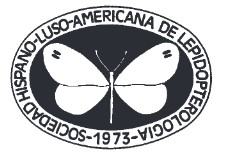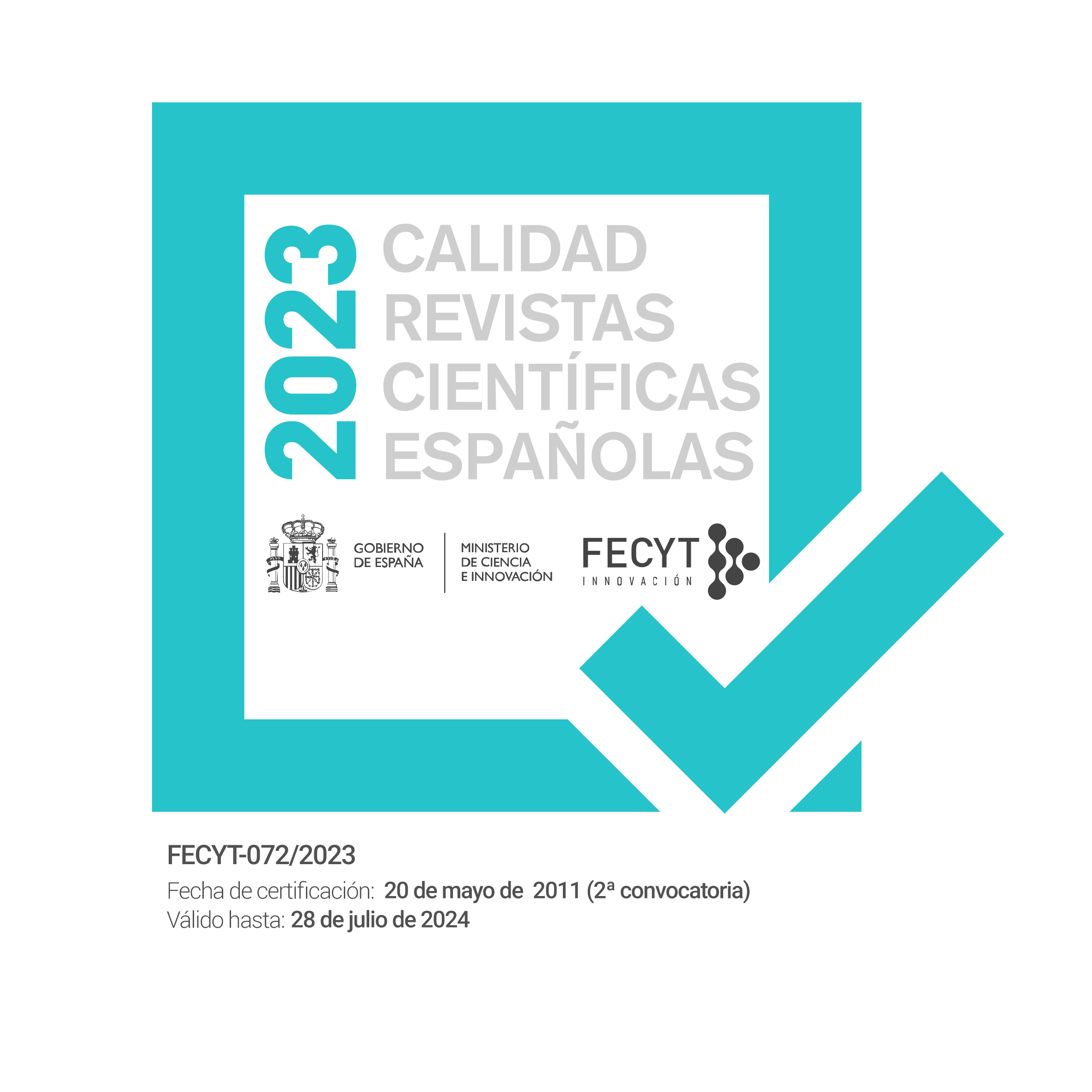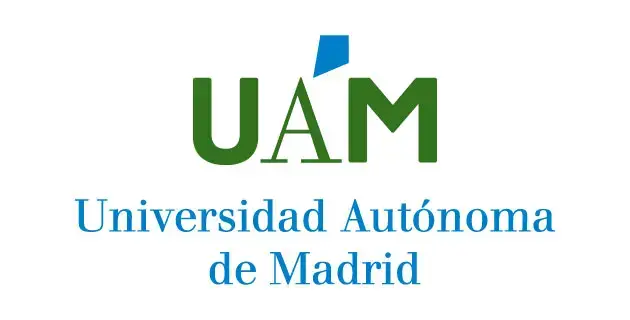Diversity of butterflies in a dry tropical forest landscape in la Mesa de los Santos, Santander, Colombia (Lepidoptera: Papilionoidea)
DOI:
https://doi.org/10.57065/shilap.974Keywords:
Lepidoptera, Papilionoidea, diversity, dry tropical forest, ColombiaAbstract
A study of butterflies diversity of in a landscape of tropical dry forest in the Mesa de los Santos (Santander), taking 36 days of sampling data was conducted between the months of IX-XI-2014, at the time of highest rainfall. The specimens were collected with entomological net and six Van Someren-Rydon baited traps, at three altitudinal bands (280-500 m, 680-900 m and 1100-1200 m), in two 100 x 10 meter transects, separated by 200 meters in each one of three selected land covers (developmental stages) types (mature forest, transition and grasslands). A total of 1389 individuals distributed in five families, 85 genera, 121 species and 48 subspecies were collected. Highest diversity and species richness values were found at 680-900 m while lower values appeared at 280-500 m. Beta diversity show the presence of a single community and an intermediate turnover in species composition in the different altitudinal bands. Similarity analysis differentiated two altitudinal groups: the first one between 280-900 m and the second one between 1100-1200 m. Correspondence analysis selected the butterfly numbers with regard to developmental stages and presented different butterfly groups in the land covers as well as their relation with the structure and floristic composition of each one of them. Unique species were also recorded by developmental stage, (BM): Dione moneta, Eunica monima, Zizula cyna, Marpesia chiron; (BT): Euptoieta hegesia, Heraclides homothoas; (P): Battus polydamas, Hamadryas feronia, Pyrisitia venusta. Additionally, the distribution range of Yphthimoides blanquita was expanded to the Eastern Cordillera, recognized only in areas Bs-T in western Colombia and in the Cordoba department. This result, present the relevance of the different land covers in transformed landscapes, as a refuge for butterfly species biodiversity and their conservation.
Downloads
Global Statistics ℹ️
|
457
Views
|
307
Downloads
|
|
764
Total
|
|
References
ALCALDÍA DE LOS SANTOS, 2015.– Municipio de Los Santos. Alcaldía de Los Santos, Santander. Disponible en http://www.lossantossantander.gov.co/informacion_general.shtml (accedido el 10 de abril de 2015).
ANDRADE-C., M. G., HENAO-BAÑOL, E. R. & TRIVIÑO, P., 2013.– Técnicas y procesamiento para la recolección, preservación y montaje de mariposas en estudios de biodiversidad y conservación (Lepidoptera: Hesperioidea-Papilionoidea).– Revista de la Academia Colombiana de Ciencias, 37(144): 311-325. DOI: https://doi.org/10.18257/raccefyn.12
ASCUNTAR-OSNAS, O., ARMBRECHT, I. & CALLE, Z., 2010.– Butterflies and vegetation in restored Gullies of different ages at the colombian Western Andes.– Boletín Cientifico del Museo de Historia Natural, 14(2): 169-186.
BARBOSA, E., MARÍN, M., GIRALDO, C. E., URIBE, S., FREITAS, A., 2016.– Description of two new species of the Neotropical genus Yphthimoides Forster, 1964 (Lepidoptera: Nymphalidae: Satyrinae) from the "renata clade".– Neotropical Biodiversity, 2(1): 87-98. DOI: https://doi.org/10.1080/23766808.2016.1217582
BOOM, C., SEÑA, L., VARGAS, M. A. & MARTÍNEZ, N., 2013.– Mariposas Hesperioidea y Papilionoidea (Insecta: Lepidoptera) en un fragmento de bosque seco tropical, Atlántico, Colombia.– Boletín Cientifico del Museo de Historia Natural, 17(1): 149-167.
BONEBRAKE, T. C., PONOSIO, L. C., BOGGS, C. & EHLRICH, P., 2010.– More than just indicators: A review of tropical Butterfly ecology and conservation.– Biological Concervation, 143: 1831-1841. DOI: https://doi.org/10.1016/j.biocon.2010.04.044
BRAY, J. R. & CURTIS, J. T., 1957.– An ordination of the upland forest communities of Southern Wisconsin.– Ecological Monograph, 27: 325-349. DOI: https://doi.org/10.2307/1942268
BRERETON, T., ROY, D. B., MIDDLEBROOK, I., BOTHAM, M. & WARREN, M., 2011.– The development of butterfly indicators in the United Kingdom and assessments in 2010.– Journal of Insect Conservation, 15: 139-151. DOI: https://doi.org/10.1007/s10841-010-9333-z
BROWN, K. S. & FREITAS, A. V. L., 2002.– Butterfly communities of urban forest fragments in Campinas, São Paulo, Brazil: Structure, instability, environmental correlates, and conservation.– Journal of Insect Conservation, 6: 217-231. DOI: https://doi.org/10.1023/A:1024462523826
BROWN, K. S. & FREITAS A. V. L. 2000.– Atlantic forest butterflies: indicators for landscape conservation.– Biotropica, 32: 934-956. DOI: https://doi.org/10.1111/j.1744-7429.2000.tb00631.x
BROWN, K. S., 1997.– Diversity, disturbance, and sustainable use of Neotropical forests: insects as indicators for conservation monitoring.– Journal of Insect Conservation, 1(1): 25-42.
CAMPOS-SALAZAR, L. R., GÓMEZ-BULLA, J. & GONZALO-ANDRADE-C., M., 2011.– Mariposas (Lepidoptera: Hesperioidea - Papilionoidea) de las áreas circundantes a las Ciénagas del Departamento de Córdoba, Colombia.– Revista de la Academia Colombiana de Ciencias, 35(134): 45-60. DOI: https://doi.org/10.18257/raccefyn.35(134).2011.2486
CARRERO, D., SÁNCHEZ, L., TOBAR, D., 2013.– Diversidad y distribución de mariposas diurnas en un gradiente altitudinal en la región nororiental andina de Colombia.– Boletín Científico del Museo de Historia Natural, 17(1): 168-188.
CLEARY, D. F. R., 2004.– Assessing the use of butterflies as indicators of logging in Borneo at three taxonomics levels.– Journal of Economic Entomology, 97: 429-435. DOI: https://doi.org/10.1093/jee/97.2.429
CHACÓN, I. & MONTERO, J., 2007.– Mariposas de Costa Rica: 366 pp. Editorial INBio.
CHAO, A., COLWELL, R. K. & LIN, C-W., 2009.– Sufficient sampling for asymptotic minimum species richness estimators.– Ecology, 90: 1125-33. DOI: https://doi.org/10.1890/07-2147.1
CHECHA, M. F., RODRÍGUEZ, J., WILLMOTT, K. R. & LIGER, B., 2014.– Microclimate variability significantly affects the composition, abundance and phenology of butterfly communities in a highly threatened Neotropical Dry forest.– Florida Entomologist, 97(1): 1-13. DOI: https://doi.org/10.1653/024.097.0101
COLWELL, R. K. & LESS., D. C., 2000.– The middomain effect: Geometric constraints on the geography of species richness.– Trends Ecology Evolution, 15: 70-76. DOI: https://doi.org/10.1016/S0169-5347(99)01767-X
COLWELL, R., CHAO, A., GOTELLI, N., LIN, S-Y., MAO, C. X, CHAZDON, R. L. & LONGINO, J. T., 2012.– Models and estimators linking individual-based and sample-based rarefaction, extrapolation, and comparison of assemblages.– Journal of Plant Ecology, 5: 3-21. DOI: https://doi.org/10.1093/jpe/rtr044
COLWELL, R. K., 2013.– EstimateS, Version 9.1: Statistical Estimation of Species Richness and Shared Species from Samples (Software and User’s Guide). Disponible en: http://viceroy.eeb.uconn.edu/estimates/ (accedido el 16 de agosto de 2015)
CUATRECASAS, J., 1958.– Aspectos de la vegetación natural de Colombia. 44 pp. Editorial Voluntad, Colombia.
DEBINSKI, D. M. & HOLT, R. D., 2000.– A survey and overview of habitat fragmentation experiments.– Conservation Biology, 14: 342-355. DOI: https://doi.org/10.1046/j.1523-1739.2000.98081.x
DENNIS, R., SHREEVE, T. G. & SHEPPARD, D A., 2007.– Species conservation and landscape management: A habitat perspective.– Insect Conservation Biology. CABI: 92-126. DOI: https://doi.org/10.1079/9781845932541.0092
DeVRIES, P., 1987.– The Butterflies of Costa Rica and their natural history, Papilionidae, Pieridae, Nymphalidae: 327 pp. Princenton University Press, Princeton.
DeVRIES, P. J., MURRAY, D. & LANDE, R., 1997.– Species diversity in vertical, horizontal, and temporal dimensions of a fruit-feeding butterfly community in an Ecuadorian rainforest.– Biological Journal of the Linnean Society, 62: 343-364. DOI: https://doi.org/10.1111/j.1095-8312.1997.tb01630.x
DeVRIES, P. J., WALLAS, T. R. & GREENEY, H., 1999.– Species diversity in spatial and temporal dimensions of fruit-feeding butterflies from two Ecuadorial rainforests.– Biological Journal of the Linnean Society, 68: 333-353. DOI: https://doi.org/10.1111/j.1095-8312.1999.tb01175.x
ESPINAL, L. S., 1985.– Geografía ecológica del departamento de Antioquia.– Revista de la Facultad Nacional de Agronomía, 38(1): 24-39.
FERNÁNDEZ, I., MORALES, N. & GÓMEZ, M., 2010.– Restauración ecológica para ecosistemas afectados por incendios forestales.– Revista Chilena de Historia Natural, 83: 461-462. DOI: https://doi.org/10.4067/S0716-078X2010000300014
FREITAS, A. V. L., FRANCINI, R. B. & BROWN JR, K. S., 2003.– Insetos como indicadores ambientais.– In L. CULEN, R. RUDRAN & C. VALLADARES-PÁDUA (eds.). Manual Brasileiro em Biologia da Conservação: 255-273. Smithsonian Institution Press., Washington, D.C.
L. C. CASAS-PINILLA, O. MAHECHA-J., J. C. DUMAR-R. & I. C. RÍOS-MÁLAVER 100 SHILAP Revta. lepid., 45 (177) marzo 2017
FREITAS, A. V. L., ISERHARD, C. A., SANTOS, J. P., CARREIRA, J. Y. O., RIBEIRO, D. B., MELO, D. H. A., ROSA. A. H. B., MARINI-FILHO, O. J., ACCACIO, G. M. & UEHARA-PRADO, M., 2014.– Studies with butterfly bait traps: an overview.– Revista Colombiana de Entomología, 40(2): 209-218.
GARCÍA-PÉREZ, J., OSPINA-LÓPEZ, L., VILLA-NAVARRO, F. & REINOSO-FLÓREZ, G., 2007.– Diversidad y distribución de mariposas Satyrinae (Lepidoptera: Nymphalidae) en la cuenca del río Coello, Colombia.– Revista de Biología Tropical, 55(2): 645-653. DOI: https://doi.org/10.15517/rbt.v55i2.6039
GAVIRIA-ORTIZ, F. & HENAO, B. E., 2014.– Diversidad de mariposas diurnas (Hesperioidea-Papilionoidea) en tres estados sucesionales de un bosque húmedo premontano bajo, Tulua, Valle del Cauca.– Revista de la Facultad de Ciencias de la Universidad Nacional de Colombia, 3(2): 49-80.
GLEASON, H. A., 1926.– The individualistic concept of the plant association.– Bulletin of the Torrey Botanical Club, 53: 7-26. DOI: https://doi.org/10.2307/2479933
GOOGLE EARTH, 2016.– Área de estudio: Mesa de Xéridas, Santander, Colombia. Disponible en http://www.google.com (accedido el 25 de mayo de 2015).
HAMMER, Ø., HARPER, D. A. T. & RYAN P. D., 2014.– PAST: Paleontological Statistics Software Package for Education and Data Analysis. Palaeontologia Electronica: Disponible en http://palaeoelectronica.org/2001_1/past/issue1_01.Htm (accedido el 15 de agosto de 2015).
HALFFTER, G. & ARELLANO, L., 2002.– Response of dung beetle diversity to human-induced changes in a tropical landscape.– Biotropica, 34: 144-154. DOI: https://doi.org/10.1111/j.1744-7429.2002.tb00250.x
HALFFTER, G. & MORENO, C., 2005.– Significado de las diversidades alfa, beta y gamma. Monografías del Tercer Milenio.– Sociedad Entomológica Aragonesa, 4: 5-18.
INCIVA & JARDÍN BOTÁNICO JUAN MARÍA CÉSPEDES., 2007.– Plan de ordenamiento territorial y plan de manejo ambiental de la reserva natural de la sociedad civil “Los Chagualos” corregimiento de La Marina, Municipio de Tulúa, Valle del Cauca.– INCIVA - Jardín Botánico Juan María Céspedes: 25-27.
JANZEN, D. H., 1983.– Seasonal changes in abundance of larg nocturnal Cag-beetles (Scarabaeidae) in Costa Rica deciduous forest and adyacent horse pasture.– Oikos, 41: 274-283. DOI: https://doi.org/10.2307/3544274
JANZEN, D. H., 1988.– Management of habitat fragments in a tropical dry forest: growth. Ann.– Missouri Botanical Garden, 75: 105-116. DOI: https://doi.org/10.2307/2399468
JOST, L., 2006.– Entropy and diversity.– Oikos, 113: 363-375. DOI: https://doi.org/10.1111/j.2006.0030-1299.14714.x
KRENN, H., 2008.– Feeding behaviours of Neotropical butterflies. (Lepidoptera, Papilionoidea) zugleich.– Kataloge der oberösterreichischen Landesmuseen Neue Series, 80: 295-304.
LAMAS, G., 2004.– Atlas of Neotropical Lepidoptera. Checklist: Part 4A. Hesperioidea-Papilionoidea: XXXVI + 439 pp. Association for Tropical Lepidoptera, Gainesville.
LEBART, L., 1974.– On the Benzécri’s method for finding eigenvectors by stochastic approximation.– COMPSTAT, Proceedings in Computational. Statist: 202-211.
LE CROM, J. F., CONSTANTINO, L. M. & SALAZAR, J. A., 2002.– Mariposas de Colombia. Papilionidae, 1: 119 pp. Carlec Ltda., Bogotá.
LE CROM, J. F., CONSTANTINO, L. M. & SALAZAR, J. A., 2004.– Mariposas de Colombia. Pieridae, 2: 113 pp. Carlec Ltda., Bogotá.
MARÍN, M., ÁLVAREZ, C., GIRALDO, C., PYREZ, T., URIBE, S. & VILA, R., 2014.– Mariposas en un bosque de niebla andino periurbano en el valle de Aburrá, Colombia.– Revista Mexicana de Biodiversidad, 85: 200-208. DOI: https://doi.org/10.7550/rmb.36605
MARTÍNEZ, E., RÖS, M., BONILLA, M. A. & DIRZO, R., 2015.– Habitat Heterogeneity Affects Plant and Arthropod Species Diversity and Turnover in Traditional Cornfields.– PLoS ONE, 10(7). DOI: https://doi.org/10.1371/journal.pone.0128950
MENÉNDEZ, A., GONZÁLES-MEGÍAS, Y., COLLINGHAM, R. & FOX, D. B. R., 2007.– Direct and indirect effects of climate and habitat factors on butterfly diversity.– Ecology, 88(3): 605-611. DOI: https://doi.org/10.1890/06-0539
MERCKX, T. & VAN DYCK, H., 2006.– Landscape structure and phenotypic plasticity in flight morphology in the butterfly Pararge aegeria.– Oikos, 113: 226-232. DOI: https://doi.org/10.1111/j.2006.0030-1299.14501.x
MILLER, D. G., LANE, J. & SENOCK, R., 2011.– Butterflies as potential bioindicators of primary rainforest and oil palm plantation habitats on New Britain, Papua New Guinea.– Pacific Conservation Biology, 17: 149-159. DOI: https://doi.org/10.1071/PC110149
MOLLEMAN, F., KOP, A., BRAKEFIELD, P., DEVRIES, P. J. & ZWAAN, B., 2006.– Vertical and temporal patterns of biodiversity of fruit feeding butterflies in a tropical forest in Uganda.– Biodiversity and Conservation, 15: 107-121. DOI: https://doi.org/10.1007/s10531-004-3955-y
MONTERO, F. & MORENO, M., 2006.– Áreas con potencial de uso como zonas de conservación de fauna y flora en el departamento del Atlántico. Tomo Mariposas: 20 pp. Universidad del Atlántico - Corporación Autónoma Regional del Atlántico (CRA).
MONTERO, F., MORENO, M. & GUTIÉRREZ, L. C., 2009.– Mariposas (Lepidoptera: Hesperioidea y Papilionoidea) asociadas a fragmentos de bosque seco en el departamento del Atlántico, Colombia.– Boletín Científico del Centro de Museos. Museo de Historia Natural, 13(2): 157-173.
MORENO, C. E., 2001.– Métodos para medir la biodiversidad: 84 pp. Manuales y Tesis, Sociedad Entomológica Aragonesa, Zaragoza.
MORENO, C. E., BARRAGÁN, F., PINEDA, E. & PAVÓN, N. P., 2011.– Reanálisis de la diversidad alfa: alternativas para interpretar y comparar información sobre comunidades ecológicas.– Revista Mexicana de Biodiversidad, 82: 1249-1261. DOI: https://doi.org/10.22201/ib.20078706e.2011.4.745
MURPHY, P. G. & LUGO, A. E., 1986.– Ecology of tropical dry forest.– Annals Review of Ecology and Systematics, 17: 67-68. DOI: https://doi.org/10.1146/annurev.es.17.110186.000435
NEILD, A., 1996.– The butterflies of Venezuela. Part I: Nymphalidae I (Limenitidinae, Apaturinae, Charaxinae): 144 pp. Meridian Publications, London.
NEILD, A., 2008.– The butterflies of Venezuela. Part II: Nymphalidae II (Acraeinae, Libytheinae, Nymphalinae, Ithomiinae and Morphinae): 144 pp. Meridian Publications, London.
NEW, T. R, 1997.– Are Lepidoptera an effective "umbrella group" for biodiversity conservation?– Journal of Insect Conservation, 1: 5-12.
OROZCO, S., MURIEL, S. & PALACIO, J., 2009.– Diversidad de Lepidópteros diurnos en un área de Bosque seco Tropical del occidente Antioqueño.– Actualidades Biológicas, 31(90): 31-41. DOI: https://doi.org/10.17533/udea.acbi.4727
OSPINA-LÓPEZ, L. A., ANDRADE-C., M. G. & REINOSO-FLÓREZ, G., 2015.– Diversidad de mariposas y su relación con el paisaje en la cuenca del río Lagunillas, Tolima, Colombia.– Revista de la Academia Colombiana de Ciencias, 39(153): 455-474. DOI: https://doi.org/10.18257/raccefyn.215
PIZANO, C. & GARCÍA, H., 2014.– El Bosque Seco Tropical en Colombia: 349 pp. Instituto de Investigación de Recursos Biológicos Alexander von Humboldt (IAvH), Bogotá D.C.
PRIETO, A. V. & CONSTANTINO, L. M., 1996.– Abundancia distribución y diversidad de mariposas (Lep. Rhopalocera) en El Río Tatabro, Buenaventura (Valle-Colombia).– Boletín del Museo de Entomología de La Universidad del Valle, 4: 11-18
PRINCE-CHACÓN, S., VARGAS-ZAPATA, M., SALAZAR, J. & MARTÍNEZ-HERNÁNDEZ, N., 2011.– Mariposas Papilionoidea y Hesperioidea (Insecta: Lepidoptera) en dos fragmentos de Bosque seco tropical en Corrales de San Luis, Atlántico, Colombia.– Boletín de la Sociedad Entomológica Aragonesa, 48: 243-252.
PYRCZ, T. W., PRIETO, C., VILORIA, A. L. & ANDRADE-C., G., 2013.– New species of high elevation cloud forest butterflies of the genus Pedaliodes Butler from the northern Colombian Andes (Lepidoptera, Nymphalidae, Satyrinae).– Zootaxa, 3716(4): 528-538. DOI: https://doi.org/10.11646/zootaxa.3716.4.2
RIBEIRO, D., PRADO, P., BROWN Jr., K. S. & FREITAS, A. V. L., 2008.– Additive partitioning of butterfly diversity in a fragmented landscape: importance of scale and implications for conservation.– Diversity and Distributions, 14(6): 961-968. DOI: https://doi.org/10.1111/j.1472-4642.2008.00505.x
RÍOS-MÁLAVER., I. C., 2007.– Riqueza de especies de mariposas (Hesperioidea & Papilionoidea) de la Quebrada El Águila, Cordillera Central, Manizales, Colombia.– Boletín Científico del Museo de Historia Natural, Universidad de Caldas, 11: 272-291.
RODRÍGUEZ, M., ARMENTERAS, D., MORALES, M. & ROMERO, M., 2006.– Ecosistemas de los Andes Colombianos: 154 pp. Instituto de Investigación de Recursos Biológicos Alexander von Humboldt (IAvH), Bogotá D.C.
SALAMANCA, B. & CAMARGO, G., 2000.– Protocolo Distrital de restauración ecológica: 289 pp. DAMA, Bogotá.
TOBAR, L., RANGEL, J. O. & ANDRADE, M. G., 2002.– Diversidad de mariposas (Lepidoptera: Rhopalocera) en la parte alta de la cuenca del río El roble (Quindío-Colombia).– Caldasia, 24(2): 393-409.
UEHARA-PRADO, M., BROWN, K. & FREITAS, A., 2007.– Species richness, composition and abundance of fruit-feeding butterflies in the Brazilian Atlantic Forest: comparison between a fragmented and a continuous landscape.– Global Ecology and Biogeography, 16: 43-54. DOI: https://doi.org/10.1111/j.1466-8238.2006.00267.x
VARGAS-ZAPATA, M. A., BOOM-URUETA, C. J., SEÑA-RAMOS, L. I., ECHEVERRY-IGLESIAS, A. L. & MARTÍNEZ-HERNÁNDEZ, N. J., 2015.– Composición vegetal, preferencias alimenticias y abundancia de Biblidinae (Lepidoptera: Nymphalidae) en un fragmento de bosque seco tropical en el departamento del Atlántico, Colombia.– Acta Biológica Colombiana, 20(3): 79-92. DOI: https://doi.org/10.15446/abc.v20n3.42545
VARGAS-ZAPATA, M., MARTÍNEZ-HERNÁNDEZ, N., GUTIÉRREZ-MORENO, L., PRINCE-CHACÓN, S., HERRERA, V. & TORRES-PERIÑÁN, L., 2011.– Riqueza y abundancia de Hesperioidea y Papilionoidea (Lepidoptera) en la Reserva natural Las Delicias, Santa Marta, Magdalena, Colombia.– Acta Biológica de Colombia, 16: 43-60.
VILLARREAL, H., ÁLVAREZ, M., CÓRDOBA, S., ESCOBAR, F., FAGUA, G., GAST, F., MENDOZA, H., OSPINA, M. & UMAÑA, A. M., 2004.– Manual de métodos para el desarrollo de inventarios de biodiversidad. Programa de Inventarios de Biodiversidad: 235. Instituto de Investigación de Recursos Biológicos Alexander von Humboldt, Bogotá.
WARREN, D., DAVIS, J., STANGELAND, M., PELHAM, J. & GRISHIN, N., 2013.– Illustrated Lists of American Butterflies. Disponible en http://www.butterfliesofamerica.com/ (accedido el 25 de mayo de 2015).
WETTSTEIN, W. & SCHMID, B., 1999.– Conservation of arthropod diversity in montane wetlands: effect of altitude, habitat quality and habitat fragmentation on butterflies and grasshopper.– Journal of Applied Ecology, 36: 363-373. DOI: https://doi.org/10.1046/j.1365-2664.1999.00404.x
ZAPATA, F. A., GASTÓN, K. J. & CHOWN, S. L., 2005.– The Mid-Domain Effect Revisited.– The American Naturalist, 166(5): 144-148. DOI: https://doi.org/10.1086/491685
Downloads
Published
How to Cite
Issue
Section
License

This work is licensed under a Creative Commons Attribution 4.0 International License.
The author SS retains his trademark and patent rights to any process or procedure within the article.
The author retains the right to share, distribute, perform and publicly communicate the article published in SHILAP Revista de lepidopterología, with initial acknowledgement of its publication in SHILAP Revista de lepidopterología.
The author retains the right to make a subsequent publication of his work, from using the article to publishing it in a book, provided that he indicates its initial publication in SHILAP Revista de lepidopterología.
Each submission to SHILAP Revista de lepidopterología must be accompanied by an acceptance of copyright and acknowledgement of authorship. By accepting them, authors retain copyright of their work and agree that the article, if accepted for publication by SHILAP Revista de lepidopterología, will be licensed for use and distribution under a "Creative Commons Attribution 4.0 International" (CC BY 4.0) licence that allows third parties to share and adapt the content for any purpose giving appropriate credit to the original work.
You may read here the basic information and the legal text of the license. The indication of the CC BY 4.0 License must be expressly stated in this way when necessary.
As of 2022, the content of the print and digital version is licensed under a "Creative Commons Attribution 4.0 International License" (CC BY 4.0), licence that allows third parties to share and adapt the content for any purpose giving appropriate credit to the original work.
Previous content in the journal was published under a traditional copyright licence; however, the archive is available for free access.
When using the contents of SHILAP Revista de lepidopterología published before 2022, including figures, tables or any other material in printed or electronic format belong to the authors of the articles, the authors must obtain the permission of the copyright holder. Legal, financial and criminal liabilities in this respect belong to the author(s).
In application of the Principle of Priority of the International Code of Zoological Nomenclature, no other version than the one published by the publisher may be deposited in repositories, personal websites or similar.





























